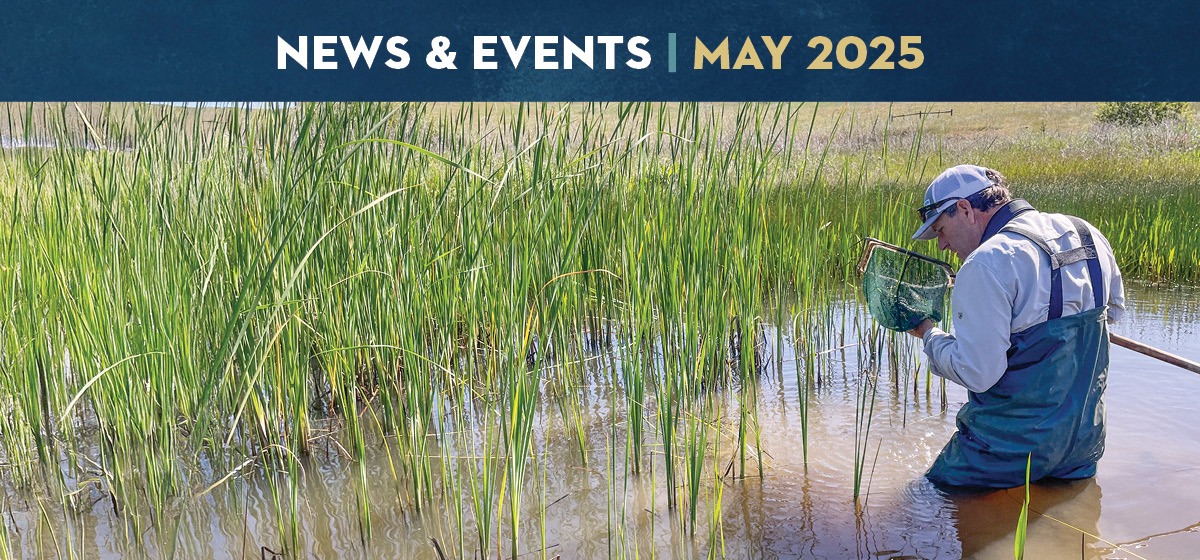
Conserving what connects us
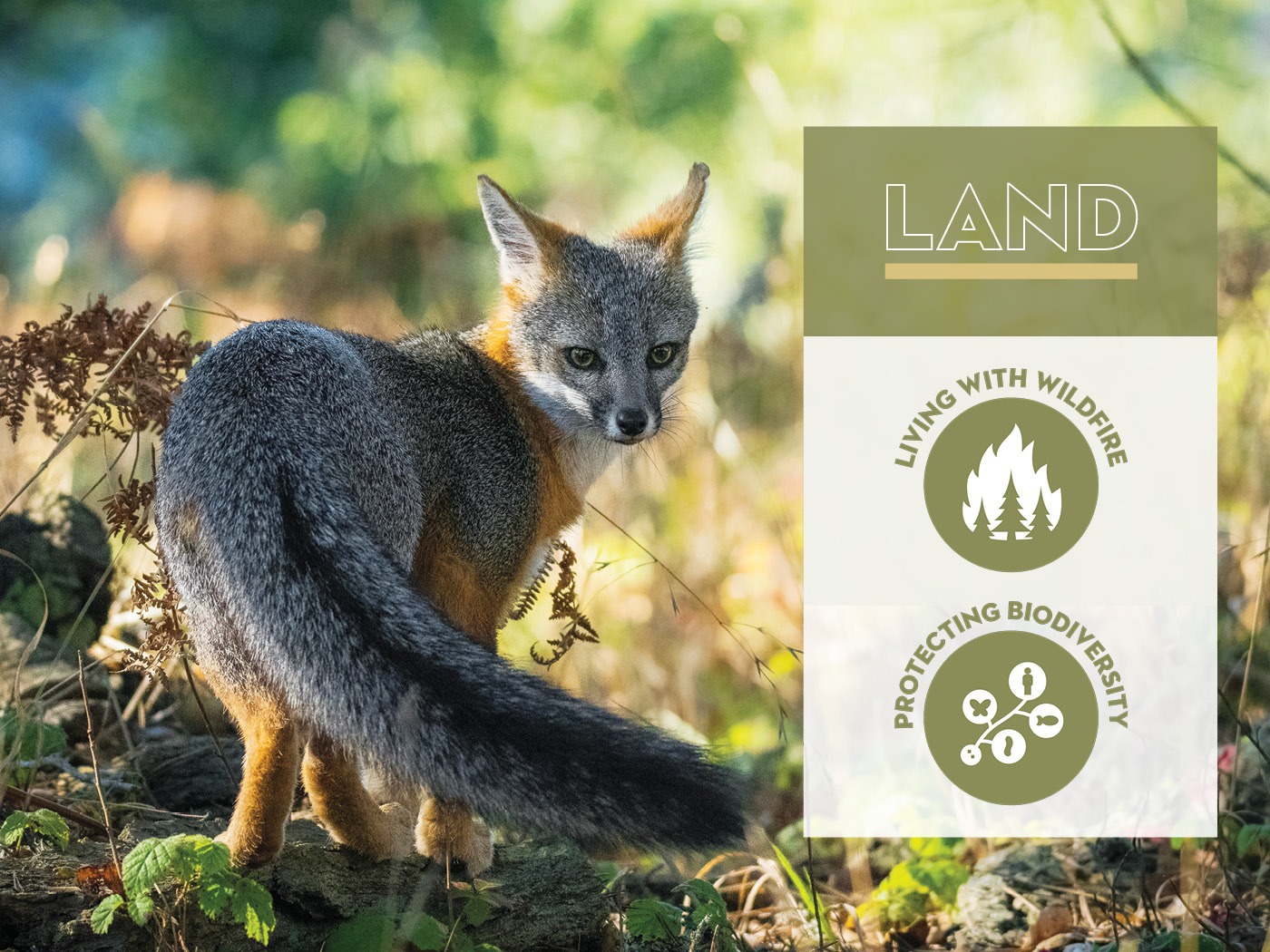
Biodiversity at the heart of conservation in Sonoma County
Biodiversity is more than a buzzword—it’s the foundation of life. At Sonoma Land Trust, we protect the plants, animals, and ecosystems that make Sonoma County one of the world’s most biodiverse regions. Since our work began in the 1970s, we have protected over 61,400 acres of beautiful, environmentally significant land in and around Sonoma County. Through our Protecting Biodiversity focal strategy, we’re actively working to safeguard this natural legacy for generations to come.
This strategy aligns with California’s 30×30 initiative to conserve 30% of the state’s lands and coastal waters by 2030. Our approach focuses on preserving the quality and connectivity of resilient landscapes—ensuring wildlife can move freely, habitats remain healthy, and ecosystems continue to thrive. We measure the success of this strategy through several lenses: acres conserved, habitats restored, and relationships strengthened through partnerships.
Since 2023, we’ve added over 4,200 acres to our network of managed and protected lands, almost doubling what we had before. We’ve expanded critical wildlife corridors in Sonoma Valley and added more acreage into that region by acquiring our Sonoma Mountain Vernal Pools Preserve, McCormick Ranch, and One Hundred Acre Ranch. Our partnership with organizations like the North Bay Bear Collaborative continues to help us understand and support our region’s growing bear population and their movement through urban areas.
We’re centering science across all of our preserves. Through the Cornell Bird Project and collaborative research on forest health and fire resilience, we’re opening our lands to deepen understanding and guide effective stewardship. Additionally, we’re taking action by removing barriers like old fencing to restore natural wildlife movement.
At Sonoma Land Trust, biodiversity is not just one of our goals—it’s woven through everything we do.
We’re getting good at good fire
“For almost a hundred years, we’ve been taking out loans every time we put out a fire in an oak woodland, every time we stop good fire in grasslands, and a lot of those debts are finally coming due,” shared Chris Carlson, Sonoma Valley Stewardship Program Manager.
In 2023, we began our strategic planning to address the historic “fire deficit” caused by decades of fire suppression. When we joined the Sonoma Valley Wildlands Collaborative in 2017, we were responding to catastrophic wildfires. Now, with our partner organizations, we have completed over 1,000 acres of understory thinning and shaded fuel break projects, and more than 350 acres of prescribed burning.
Since the devastating wildfires in 2017, we’ve evolved from a basic understanding of what prescribed fire is to strategically reintroducing it as a tool to restore ecological balance in grasslands and forests. Reintroducing beneficial fire to the land requires science-based approaches, collaboration, and trust. We have partnered with organizations such as Audubon Canyon Ranch, state parks, regional parks, Pepperwood, Ag + Open Space, and the Laguna Foundation, which help us share knowledge and expand our impact. We have also begun using smaller, targeted burns to assist endangered species. Just last December, at Lower Pitkin Marsh, we burned a small section of the marsh to help white sedge (Carex albida) reestablish itself.
In 2024, we worked across property lines too. To think about prescribed burns on a larger scale like this–beyond a single preserve or organization–is a huge win. Bringing good fire back to the land has led to healthier ecosystems, higher numbers of native species, renewed soil nutrients back in the land, and more biologically diverse grasslands.
Our stewardship team now has nine stewardship staff who are fireline trained. Joe Plaugher, a stewardship program manager at Sonoma Land Trust, is also now a State-Certified Prescribed-Fire Burn Boss. We’re also partnering with Conservation Corps North Bay and North Bay Jobs with Justice to bring in community members who have not been traditionally included in the field.
Thanks to that robust ecosystem of partnerships, we’re just getting going as a community. Looking ahead, we will keep working together to address the “fire deficit” and increase healthy forests and communities.
Conservar lo que nos une
La biodiversidad en el centro de la conservación en el condado de Sonoma
La biodiversidad es más que una palabra de moda: es la base de la vida. En Sonoma Land Trust, protegemos las plantas, los animales y los ecosistemas que hacen del condado de Sonoma una de las regiones con mayor biodiversidad del mundo. Desde que comenzamos nuestro trabajo en la década de 1970, hemos protegido más de 61 400 acres de tierras hermosas y de gran importancia medioambiental en el condado de Sonoma y sus alrededores. A través de nuestra estrategia central «Proteger la biodiversidad», trabajamos activamente para salvaguardar este legado natural para las generaciones futuras.
Esta estrategia está en consonancia con la iniciativa 30×30 de California, cuyo objetivo es conservar el 30 % de las tierras y aguas costeras del estado para 2030. Nuestro enfoque se centra en preservar la calidad y la conectividad de los paisajes resilientes, garantizando que la fauna silvestre pueda moverse libremente, que los hábitats se mantengan saludables y que los ecosistemas sigan prosperando. Medimos el éxito de esta estrategia a través de varios indicadores: acres conservados, hábitats restaurados y relaciones fortalecidas a través de asociaciones.
Desde 2023, hemos añadido más de 4200 acres a nuestra red de tierras protegidas, casi duplicando lo que teníamos antes. Hemos ampliado corredores críticos para la fauna silvestre en el valle de Sonoma y hemos añadido más superficie a esa región con la adquisición de la reserva Sonoma Mountain Vernal Pools Preserve, el rancho McCormick Ranch y el rancho One Hundred Acre Ranch. Nuestra colaboración con organizaciones como North Bay Bear Collaborative nos sigue ayudando a comprender y apoyar a la creciente población de osos de nuestra región y sus movimientos por las zonas urbanas.
También estamos creando espacio para la ciencia en nuestras reservas. A través del Cornell Bird Project y la investigación colaborativa sobre la salud de los bosques y la resiliencia al fuego, estamos abriendo nuestras tierras para profundizar en el conocimiento y orientar una gestión eficaz. Además, estamos tomando medidas para eliminar barreras como las vallas antiguas con el fin de restaurar el movimiento natural de la fauna silvestre.
En Sonoma Land Trust, la biodiversidad no es solo uno de nuestros objetivos, sino que está presente en todo lo que hacemos.
Estamos mejorando en el manejo del fuego
«Durante casi cien años, hemos pedido préstamos cada vez que apagábamos un incendio en un bosque de robles, cada vez que deteníamos un fuego beneficioso en los pastizales, y muchas de esas deudas están llegando a su vencimiento», compartió Chris Carlson, director del Programa de Administración del Valle de Sonoma.
En 2023, comenzamos nuestra planificación estratégica para abordar el histórico «déficit de incendios» causado por décadas de supresión de incendios. Cuando nos unimos a Sonoma Valley Wildlands Collaborative en 2017, estábamos respondiendo a incendios forestales catastróficos. Ahora, con nuestras organizaciones asociadas, hemos completado más de 1000 acres de proyectos de clareo del sotobosque y de cortas de combustible sombreadas, y más de 350 acres de quemas prescritas.
Desde los devastadores incendios forestales de 2017, hemos pasado de una comprensión básica de lo que es el fuego controlado a reintroducirlo estratégicamente como herramienta para restaurar el equilibrio ecológico en los pastizales y bosques. La reintroducción del fuego beneficioso en la tierra requiere enfoques basados en la ciencia, colaboración y confianza. Nos hemos asociado con organizaciones como Audubon Canyon Ranch, parques estatales, parques regionales, Pepperwood, Ag + Open Space y la Fundación Laguna, que nos ayudan a compartir conocimientos y ampliar nuestro impacto. También hemos comenzado a utilizar quemas más pequeñas y específicas para ayudar a las especies en peligro de extinción. El pasado mes de diciembre, en Lower Pitkin Marsh, quemamos una pequeña sección del pantano para ayudar a que se restableciera la juncia blanca (Carex albida).
En 2024, también trabajamos más allá de los límites de la propiedad. Pensar en quemas prescritas a mayor escala, más allá de una sola reserva o organización, es un gran logro. Devolver el fuego beneficioso a la tierra ha dado lugar a ecosistemas más saludables, un mayor número de especies autóctonas, la renovación de los nutrientes del suelo y praderas con mayor diversidad biológica.
Nuestro equipo de gestión cuenta ahora con nueve miembros formados en la línea de fuego. Joe Plaugher, director del programa de gestión de Sonoma Land Trust, es ahora también jefe de quemas prescritas certificado por el estado. También estamos colaborando con Conservation Corps North Bay y North Bay Jobs with Justice para incorporar a miembros de la comunidad que tradicionalmente no han participado en este campo.
Gracias a ese sólido ecosistema de asociaciones, estamos dando los primeros pasos como comunidad. De cara al futuro, seguiremos trabajando juntos para hacer frente al «déficit de incendios» y aumentar la salud de los bosques y las comunidades.
Where nature meets neighborhoods: creating parks and open spaces
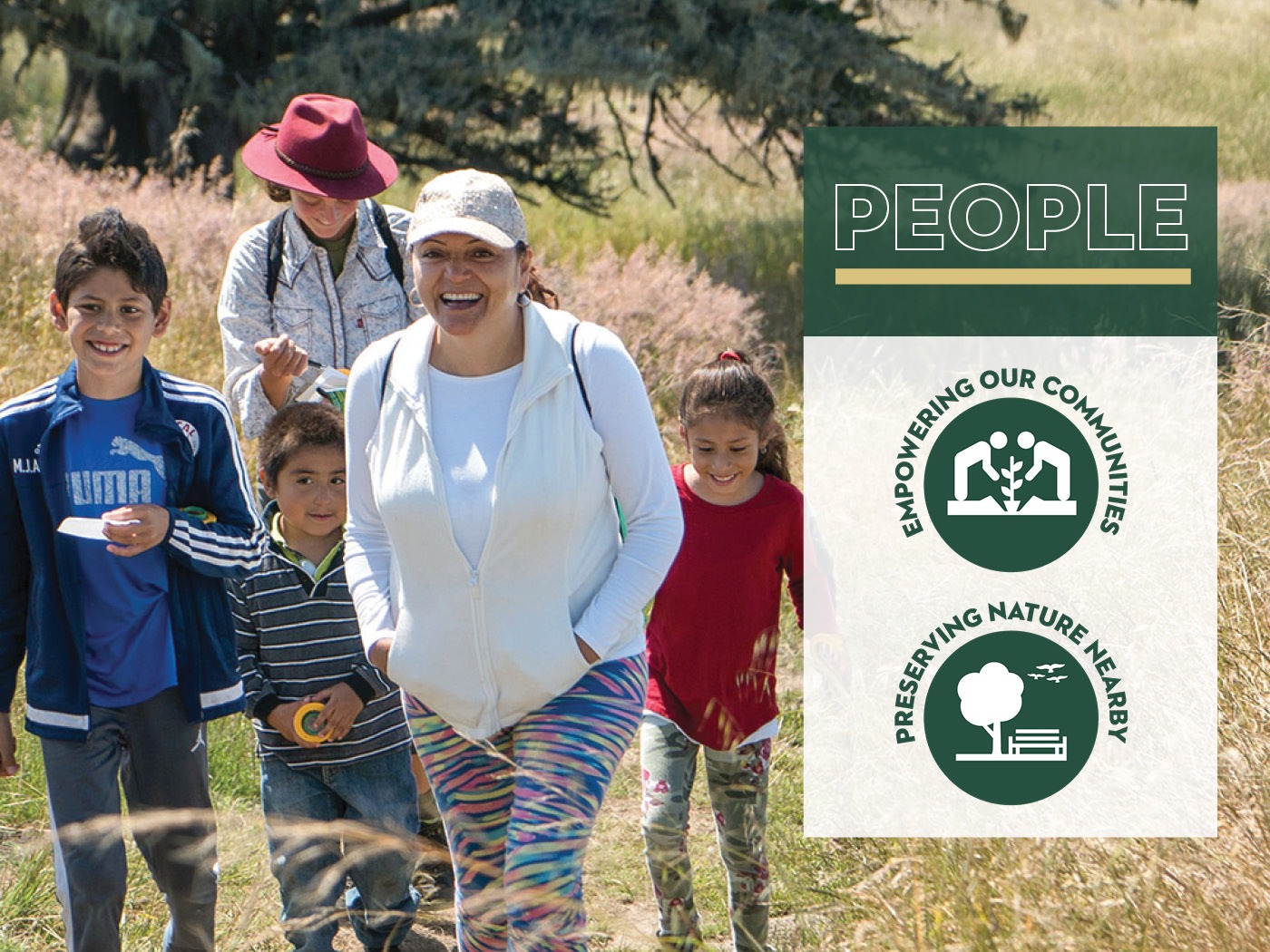
How long does it take to build a new park or expand an existing one? A long time—but the wait is worth it.
We are leveraging decades of experience, legal and fundraising expertise, and strong community relationships to address historic oversights and make equitable access to nature a reality for everyone in Sonoma County.
In 2023, we set a bold goal: to add 1,100 acres to our park system by 2028. Thanks to the Monte Rio Redwoods Expansion, we’re now on track to nearly triple that number—adding almost 3,000 acres. After a 15-year effort, we have successfully supported the transfer of the Santa Rosa Southeast Greenway to the City of Santa Rosa. This summer, Mark West Community Park, a one-acre park at Sonoma County’s busiest intersection, will open its gates. This project involved two years of extensive community engagement and tireless fundraising to bring it to life. We also helped the community form a nonprofit, secure a county use permit, and take ownership of the park.
None of these wins happened overnight. Each required years of collaboration among dedicated staff, partners, and local communities—all working together to achieve a shared vision.
Empowering communities to protect nature
When all community members are involved with local conservation efforts, the movement to protect lands and open spaces is even stronger. To make this reality possible, equitable access to nature is a must, and that access starts with the younger generations.
Our Students Learning in Marsh Environments (SLIME) program supplements local school curricula and enables students from all four North Bay counties to connect with the San Pablo Bay National Wildlife Refuge. We served 48 classrooms in the 2024-2025 school year alone. By educating students about the marshes in their greater backyard, we hope to empower them to continue learning about and protecting the places they love.
We know that students are ready to take on the challenge of conducting cutting-edge research. We also understand that for marginalized communities to continue in the field of STEM, they need to see themselves represented in it. The Conservation Council makes it possible for 75 high schoolers (and counting) to dive into primary research around land conservation and preservation. In 2024, two members of the Conservation Council completed their research at Laufenburg Ranch Preserve–one examining wildlife biodiversity and the other exploring soil health following a prescribed burn.
We continue to offer internships to college students who are building their skills in conservation and community engagement. Since 2023, we’ve equipped over 10 interns with experience in the field. We also started working with our first Conservation Easement Monitor Intern this year! We’re grateful for everyone’s enthusiasm, hard work, and fresh perspectives.
Connecting families and people of all ages to nature
Outings provide everyone the opportunity to enjoy the lands we work to protect. We’ve been busy planning and facilitating free, educational programs—adding up to over 150 meaningful outings since 2023!
We’ve also more than doubled our participation in the Spanish-forward outings program, Familias al Aire Libre, or Families Outdoors. Groups such as the Community Equity Foundation and LGBTQ Connection have partnered with us too, to increase nature access for various communities. In 2025, we also launched our Community in Nature program for people to gather at the future Southeast Greenway Park and other nearby locations.
We’re deeply aware that not everyone can get outside. Our Language on the Land webinars invite people to join us online and learn about the intersections of communities and conservation efforts. Since 2023, we’ve delivered 26 educational webinars to both local and global audiences. The webinars are available in English and Spanish and can also be found on our YouTube channel.
We thank each community member for being a significant part of our success. We hope you will join us for an outing this spring! Together, let’s continue to celebrate the lands and people that make Sonoma County special.
Donde la naturaleza se encuentra con los barrios: creación de parques y espacios abiertos
¿Cuánto tiempo se tarda en construir un nuevo parque o ampliar uno ya existente? Mucho tiempo, pero la espera merece la pena.
Estamos aprovechando décadas de experiencia, conocimientos jurídicos y en recaudación de fondos, así como nuestras sólidas relaciones con la comunidad, para abordar los descuidos históricos y hacer realidad el acceso equitativo a la naturaleza para todos los habitantes del condado de Sonoma.
En 2023, nos fijamos un objetivo ambicioso: añadir 1100 acres a nuestro sistema de parques para 2028. Gracias a la ampliación de Monte Rio Redwoods, ahora estamos en camino de casi triplicar esa cifra, añadiendo casi 3000 acres. Tras 15 años de esfuerzo, hemos conseguido apoyar la transferencia de la vía verde Santa Rosa Southeast Greenway a la ciudad de Santa Rosa. Este verano, el Mark West Community Park, un parque de una hectárea situado en la intersección más transitada del condado de Sonoma, abrirá sus puertas. Este proyecto ha supuesto dos años de intensa participación comunitaria y una incansable recaudación de fondos para hacerlo realidad. También hemos ayudado a la comunidad a crear una organización sin ánimo de lucro, a obtener un permiso de uso del condado y a adquirir la propiedad del parque.
Ninguno de estos logros se consiguió de la noche a la mañana. Cada uno de ellos requirió años de colaboración entre personal dedicado, socios y comunidades locales, todos trabajando juntos para lograr una visión compartida.
Empoderar a las comunidades para proteger la naturaleza
Cuando todos los miembros de la comunidad participan en los esfuerzos de conservación locales, el movimiento para proteger las tierras y los espacios abiertos es aún más fuerte. Para que esto sea posible, es imprescindible un acceso equitativo a la naturaleza, y ese acceso comienza con las generaciones más jóvenes.
Nuestro programa SLIME (Our Students Learning in Marsh Environments, «Nuestros estudiantes aprenden en entornos pantanosos») complementa los planes de estudio de las escuelas locales y permite a los estudiantes de los cuatro condados de North Bay conectar con el Refugio Nacional de Vida Silvestre de la Bahía de San Pablo. Solo en el curso 2024-2025 atendimos a 48 aulas. Al educar a los estudiantes sobre los humedales de su entorno más cercano, esperamos empoderarlos para que sigan aprendiendo y protegiendo los lugares que aman.
Sabemos que los estudiantes están preparados para asumir el reto de llevar a cabo investigaciones de vanguardia. También entendemos que, para que las comunidades marginadas continúen en el campo de las ciencias, la tecnología, la ingeniería y las matemáticas (STEM), necesitan verse representadas en él. El Consejo de Conservación hace posible que 75 estudiantes de secundaria (y sumando) se sumerjan en la investigación primaria sobre la conservación y la preservación de la tierra. En 2024, dos miembros del Consejo de Conservación completaron su investigación en la Reserva Laufenburg Ranch: uno examinó la biodiversidad de la vida silvestre y el otro exploró la salud del suelo tras una quema prescrita.
Seguimos ofreciendo prácticas a estudiantes universitarios que están desarrollando sus habilidades en materia de conservación y participación comunitaria. Desde 2023, hemos dotado a más de 10 becarios de experiencia en este campo. ¡Este año también hemos empezado a trabajar con nuestro primer becario para la supervisión de servidumbres de conservación! Agradecemos el entusiasmo, el trabajo duro y las nuevas perspectivas de todos.
Conectando a familias y personas de todas las edades con la naturaleza
Las excursiones ofrecen a todos la oportunidad de disfrutar de las tierras que trabajamos para proteger. Hemos estado muy ocupados planificando y facilitando programas educativos gratuitos, ¡con un total de más de 150 excursiones significativas desde 2023!
También hemos duplicado con creces nuestra participación en el programa de excursiones en español Familias al Aire Libre. Grupos como la Community Equity Foundation y LGBTQ Connection también se han asociado con nosotros para aumentar el acceso a la naturaleza de diversas comunidades. En 2025, también lanzamos nuestro programa Community in Nature para que la gente se reúna en el futuro Southeast Greenway Park y otros lugares cercanos.
Somos muy conscientes de que no todo el mundo puede salir al aire libre. Nuestros seminarios web Language on the Land invitan a la gente a unirse a nosotros en línea y aprender sobre las intersecciones entre las comunidades y los esfuerzos de conservación. Desde 2023, hemos impartido 26 seminarios web educativos a audiencias locales y globales. Los seminarios web están disponibles en inglés y español y también se pueden encontrar en nuestro canal de YouTube.
Agradecemos a cada miembro de la comunidad por ser una parte importante de nuestro éxito. Esperamos que se unan a nosotros para una excursión esta primavera. Juntos, sigamos celebrando las tierras y las personas que hacen que el condado de Sonoma sea especial.
Restoration's not an event. It's a process.
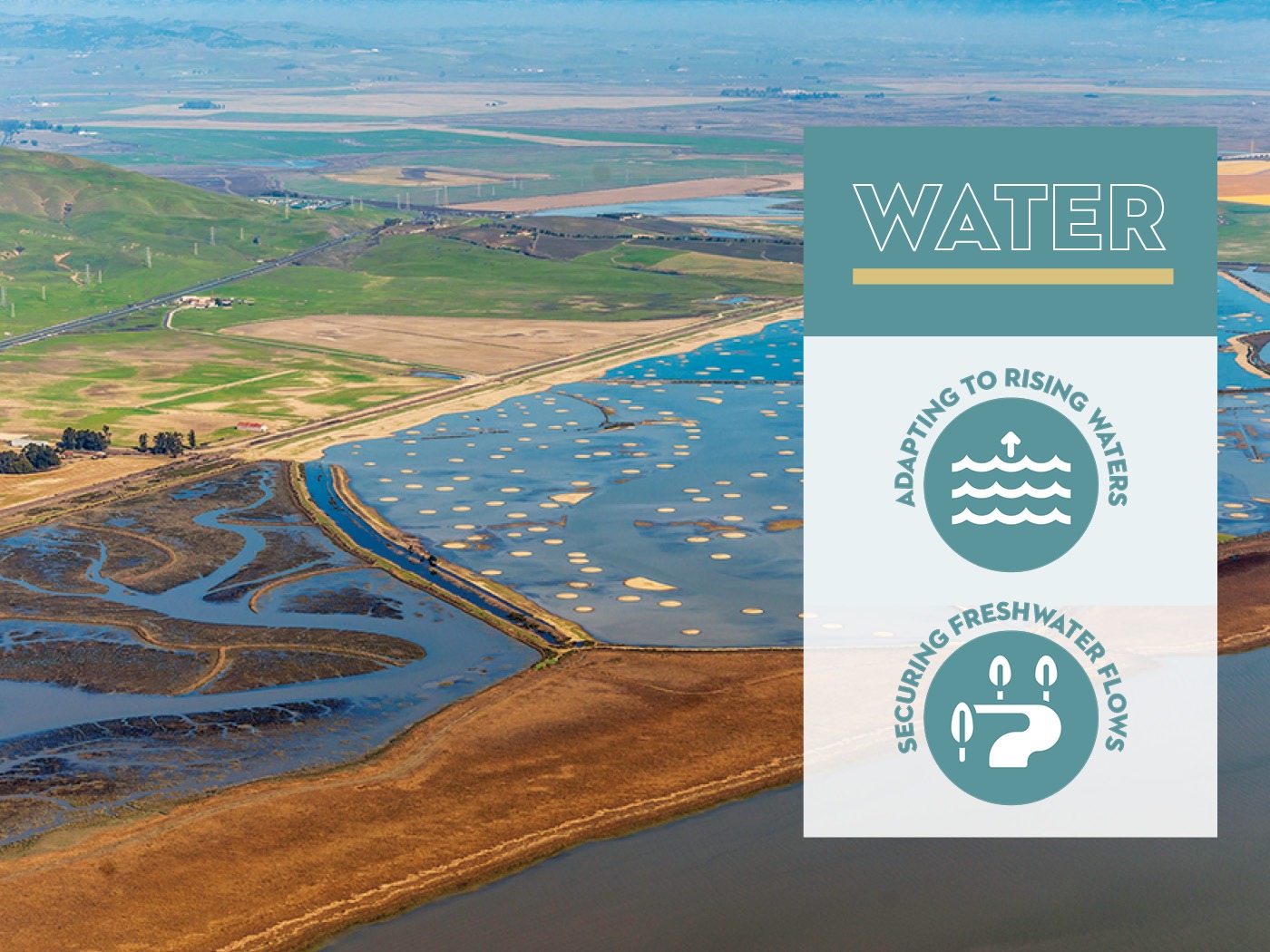
Baylands restoration is vital for climate resilience
We’re committed to adapting to rising sea levels. One of the most ambitious examples of this is unfolding in the Baylands, where rising seas are inching closer to our infrastructure at Hwy 37. The wetlands here not only provide habitat for threatened species but also serve as buffers against rising seas, floods, and fires—all while creating new opportunities for public access to the bay.
For two decades, we have laid the groundwork to restore tidal wetlands across more than 10,000 acres in the Sonoma Creek Baylands. In just the past year, we acquired Camp 4 (1,100 acres) and Camp 3 (1,450 acres)—and we will close on the final piece this spring. Together, these contribute nearly 3,000 additional acres to our previous holding of 6,500 acres, putting us within reach of our 10,000-acre goal well ahead of schedule!
We are applying the same level of strategic planning and science-based decision-making to other key watersheds. Over the past five years, we have developed an action plan for the Sonoma Creek Baylands and a larger strategy for the Petaluma River, all with ample input from scientists, agency staff, and nonprofit partners. These plans ensure that our efforts are deliberate, targeted, and aligned with broader regional goals.
As these projects scale up, we are preparing for long-term stewardship—managing stormwater systems, restoring vegetation, and supporting mosquito control—while maintaining the community relationships that have taken decades to build. Some properties may be transferred to partners such as the U.S. Fish and Wildlife Service to ensure ongoing conservation.
By pairing real estate expertise with strong partnerships and ecological stewardship, Sonoma Land Trust is proving that climate resilience begins at the intersection of land and water.
Securing freshwater flows–for fish and for all
“We’re not just protecting land; we’re protecting water,” explains the team behind the Trust’s freshwater strategy. This approach prioritizes riparian corridors—critical zones along streams and rivers—where stormwater can infiltrate the soil, native species can thrive, and groundwater can recharge. Healthy riparian zones act as natural sponges, mitigating the impacts of extended droughts and sudden flood events driven by atmospheric rivers.
Lakeville Creek: a wet meadow comes back to life
After the first full year of post-restoration monitoring, the early results exceeded expectations. The groundwater did not plummet in summer and fall—it stayed higher, longer, supporting a healthier and more stable ecosystem. In 2020, we installed groundwater monitoring wells in the stream valley to better understand the fluctuations of the water table throughout the year. As expected, the water table peaked near the surface in the winter and dropped dramatically in the dry months. However, the Stage Zero Creek restoration process has demonstrated that under the right conditions, we can transform eroded channels back into their natural, wet meadow form. We filled a deeply eroded ditch and planted approximately 35,000 plants like sedges and rushes. Our aim is to capture stormwater, recharge aquifers, restore wetland habitat, and stabilize the water table year-round to restore and sustain a vital wet meadow ecosystem.
Monte Rio Redwoods: connecting streams and protecting salmon
In the heart of West Sonoma County, we are helping purchase the Monte Rio Redwoods Expansion property, a keystone project near the Russian River. In partnership with Save the Redwoods League and Sonoma County Ag + Open Space District, we are closing a vital funding gap to protect 1,500 acres of forested land, including 3.6 miles of streams across Dutch Bill, Freezeout, and Willow Creeks. These tributaries feed directly into the Russian River and provide critical spawning grounds for coho salmon and steelhead trout.
We are also providing technical support to the Monte Rio Recreation and Parks District, helping them acquire adjacent parcels to complete this vital conservation puzzle. Identified in our Russian River Subwatershed Assessment as high-priority habitat, this expansion protects entire stream systems and bolsters the ecological integrity of the region.
What’s next: a watershed-wide approach
The Land Trust is actively pursuing due diligence on properties across several key watersheds, including Green Valley, Austin Creek, Devil Creek, Mark West Creek, Palmer Creek, and Pena Creek. These efforts are driven by one core belief: protecting land and water together is the most effective way to fight drought, flood, and habitat loss in a changing climate.
Riparian corridors don’t just provide water—they offer essential cover for wildlife, helping young animals disperse and complete their life cycles. These nature-based solutions bring us closer to a healthier, more connected landscape for future generations.
As one team member put it: “It’s a great time to be a fish.” And thanks to Sonoma Land Trust’s strategic water work, it’s also a great time to be part of a growing movement for climate resilience—rooted in land, powered by water, and guided by a vision of thriving people and ecosystems.
La restauración no es un acontecimiento. Es un proceso.
La restauración de las tierras bañadas por la bahía es vital para la resiliencia climática
Estamos comprometidos con la adaptación al aumento del nivel del mar. Uno de los ejemplos más ambiciosos de ello se está desarrollando en las tierras bañadas por la bahía, donde los afluentes de agua dulce se han mezclado con las aguas de las mareas de la bahía de San Pablo, y el aumento del nivel del mar se está acercando poco a poco a nuestras infraestructuras en la autopista 37. Los humedales de esta zona no solo proporcionan un hábitat a especies amenazadas, sino que también sirven de barrera contra el aumento del nivel del mar, las inundaciones y los incendios, al tiempo que crean nuevas oportunidades de acceso público a la bahía.
Durante dos décadas, hemos sentado las bases para restaurar más de 10 000 acres de humedales de marea en las marismas de Sonoma Creek. Solo en el último año, hemos adquirido Camp 4 (1100 acres) y Camp 3 (1450 acres), y esta primavera cerraremos la última parte. Estamos contribuyendo con casi 3000 acres a este enorme proyecto de 9200 acres, lo que nos sitúa muy por delante de nuestro objetivo de 10 000 acres.
Más allá de Baylands, estamos aplicando el mismo nivel de planificación estratégica y toma de decisiones basadas en la ciencia a otras cuencas hidrográficas clave. Durante los últimos cinco años, hemos desarrollado un plan de acción para Sonoma Creek Baylands y una estrategia más amplia para el río Petaluma, todo ello con una amplia participación de científicos, personal de agencias y socios sin ánimo de lucro. Estos planes garantizan que nuestros esfuerzos sean deliberados, específicos y estén alineados con los objetivos regionales más amplios.
A medida que estos proyectos se amplían, nos preparamos para una gestión a largo plazo —gestionando los sistemas de aguas pluviales, restaurando la vegetación y apoyando el control de mosquitos— mientras mantenemos las relaciones con la comunidad que hemos construido durante décadas. Algunas propiedades pueden ser transferidas a socios como el Servicio de Pesca y Vida Silvestre de los Estados Unidos para garantizar su conservación continua.
Al combinar su experiencia en el sector inmobiliario con sólidas alianzas y una gestión ecológica, Sonoma Land Trust está demostrando que la resiliencia climática comienza en la intersección entre la tierra y el agua.
Garantizar el flujo de agua dulce para los peces y para todos
“No solo protegemos la tierra, protegemos el agua”, explica el equipo responsable de la estrategia de agua dulce de la fundación. Este enfoque da prioridad a los corredores ribereños, zonas críticas a lo largo de arroyos y ríos, donde las aguas pluviales pueden infiltrarse en el suelo, las especies autóctonas pueden prosperar y las aguas subterráneas pueden recargarse. Las zonas ribereñas saludables actúan como esponjas naturales, mitigando los efectos de las sequías prolongadas y las inundaciones repentinas provocadas por los ríos atmosféricos.
Lakeville Creek: una pradera húmeda vuelve a la vida
En Lakeville Creek, los resultados ya se están viendo. En 2020, instalamos pozos de monitoreo de aguas subterráneas en el valle del arroyo para comprender mejor las fluctuaciones del nivel freático a lo largo del año. Como era de esperar, el nivel freático alcanzó su punto máximo cerca de la superficie en invierno y descendió drásticamente en los meses secos. Sin embargo, el proceso de restauración del arroyo Stage Zero ha demostrado que, en las condiciones adecuadas, podemos transformar los canales erosionados y devolverles su forma natural de pradera húmeda. Rellenamos una zanja profundamente erosionada y plantamos aproximadamente 35 000 plantas, como juncos y juncos. Nuestro objetivo es captar las aguas pluviales, recargar los acuíferos, restaurar el hábitat de los humedales y estabilizar el nivel freático durante todo el año para restaurar y mantener un ecosistema de pradera húmeda vital.
Tras el primer año completo de seguimiento tras la restauración, los primeros resultados superaron las expectativas. El agua subterránea ya no desciende drásticamente en verano y otoño, sino que se mantiene más alta durante más tiempo, lo que favorece un ecosistema más saludable y estable. «Es mucho más constante, mucho menos drástico, y eso es exactamente lo que esperábamos», afirma el equipo de restauración.
Monte Rio Redwoods: conectando arroyos y protegiendo el salmón
En el corazón del oeste del condado de Sonoma, estamos ayudando a comprar la propiedad Monte Rio Redwoods Expansion, un proyecto fundamental cerca del río Russian. En colaboración con Save the Redwoods League y Sonoma County Ag + Open Space District, estamos cubriendo un déficit de financiación vital para proteger 1500 acres de terreno forestal, incluidos 3,6 millas de arroyos a lo largo de Dutch Bill, Freezeout y Willow Creeks. Estos afluentes desembocan directamente en el río Russian y proporcionan zonas de desove fundamentales para el salmón coho y la trucha arcoíris.
También estamos proporcionando apoyo técnico al Distrito de Parques y Recreación de Monte Rio, ayudándoles a adquirir parcelas adyacentes para completar este rompecabezas de conservación vital. Identificada en nuestra Evaluación de la Subcuenca del Río Russian como hábitat de alta prioridad, esta ampliación protege sistemas fluviales completos y refuerza la integridad ecológica de la región.
Próximos pasos: un enfoque para toda la cuenca hidrográfica
El Land Trust está llevando a cabo con diligencia debida la adquisición de propiedades en varias cuencas hidrográficas clave, entre ellas Green Valley, Austin Creek, Devil Creek, Mark West Creek, Palmer Creek y Pena Creek. Estos esfuerzos están impulsados por una convicción fundamental: proteger la tierra y el agua de forma conjunta es la forma más eficaz de luchar contra la sequía, las inundaciones y la pérdida de hábitats en un clima cambiante.
Los corredores ribereños no solo proporcionan agua, sino que también ofrecen un refugio esencial para la fauna silvestre, ayudando a los animales jóvenes a dispersarse y completar sus ciclos de vida. Estas soluciones basadas en la naturaleza nos acercan a un paisaje más saludable y conectado para las generaciones futuras.
Como dijo uno de los miembros del equipo: «Es un gran momento para ser un pez». Y gracias al trabajo estratégico de Sonoma Land Trust en materia de agua, también es un gran momento para formar parte de un movimiento en auge en favor de la resiliencia climática, arraigado en la tierra, impulsado por el agua y guiado por una visión de prosperidad para las personas y los ecosistemas.
Double your impact to protect wild lands across Sonoma County
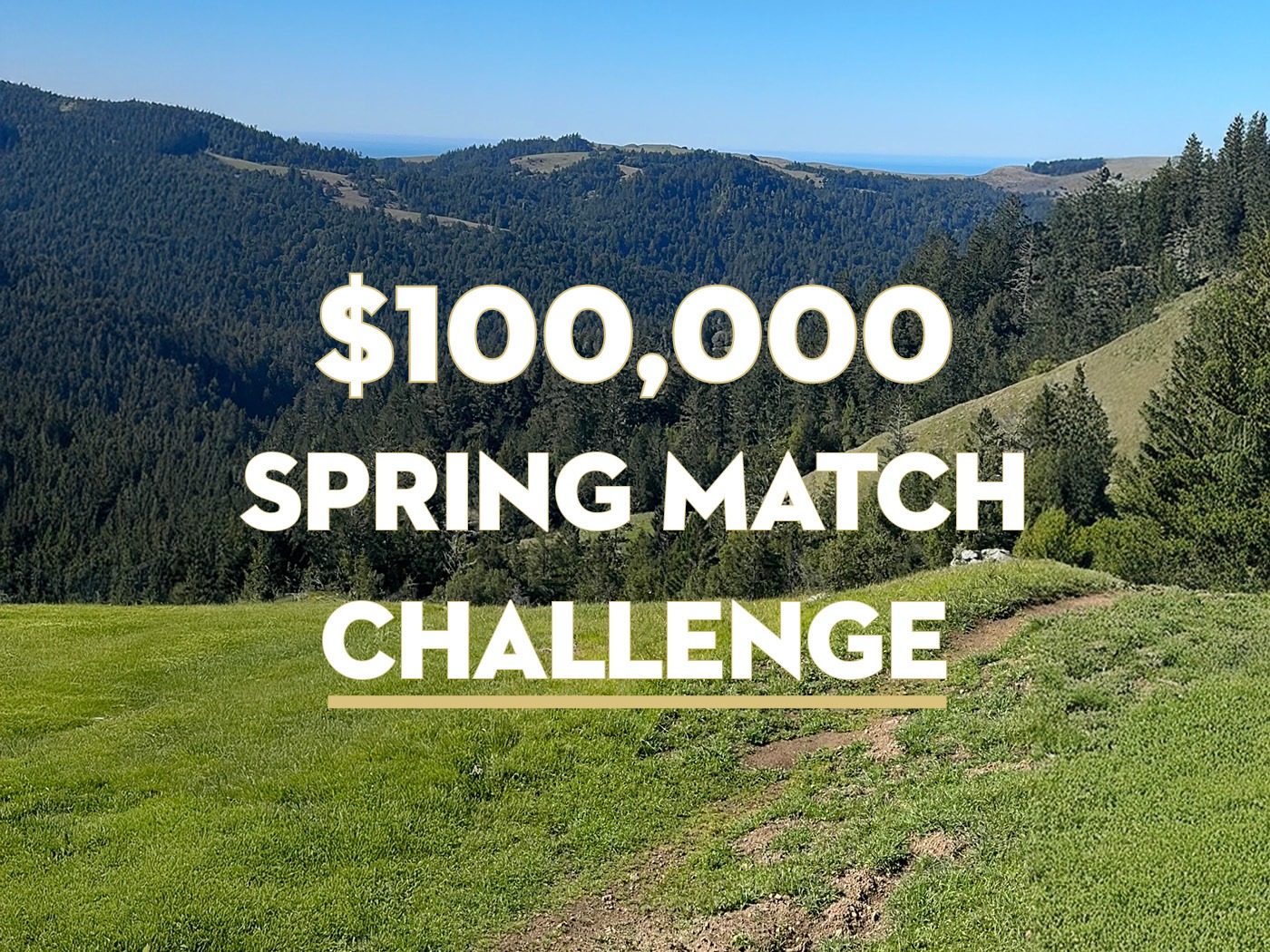
Big things are happening at Sonoma Land Trust—and your support makes it all possible.
Right now, we have more than a dozen projects in our pipeline that will protect thousands of acres of climate-resilient landscapes across Sonoma County. From towering redwood forests to vital wildlife corridors, to marsh ecosystems, and coastal preserves, your generosity fuels lasting change.
Donate today to support this work and have your gift doubled.
One exciting effort currently underway is the acquisition of the 1,517-acre Monte Rio Redwoods Expansion that would link 22,000 acres of protected land stretching from Monte Rio to the Sonoma Coast. Thanks to our partners, Save the Redwoods League, and members like you, this project will help safeguard habitat for threatened species, preserve streams that feed the Russian River, and lock away massive amounts of carbon — a natural solution to climate change.
Why Your Support Matters:
- Conservation: Helps protect redwood and Douglas-fir forests, riparian habitats, and threatened and endangered wildlife.
- Climate Action: Strengthens natural defenses against wildfire, flooding, and drought.
- Public Access: Opens the door for future hiking, biking, and outdoor recreation opportunities. We have transferred more than 10,000 acres to our park partners.
- Education & Engagement: Provides inspiring outdoor experiences for youth and future environmental leaders.
We’ve led similar efforts before — from Pole Mountain Preserve to Jenner Headlands — and with your help, we can continue connecting and conserving Sonoma’s most ecologically significant lands.
Even better — your support will go twice as far. Thanks to a generous $100,000 matching gift from Mary Clark Janis, Paul Stange and Anne Haddix, every donation will be matched dollar-for-dollar through May 31.
Be Part of the Solution
Support critical land conservation and restoration work across Sonoma County by making your tax-deductible donation today. Together, we’re shaping a more resilient Sonoma for generations to come.
News
Sonoma Land Trust receives praise and renewed accreditation from Land Trust Alliance
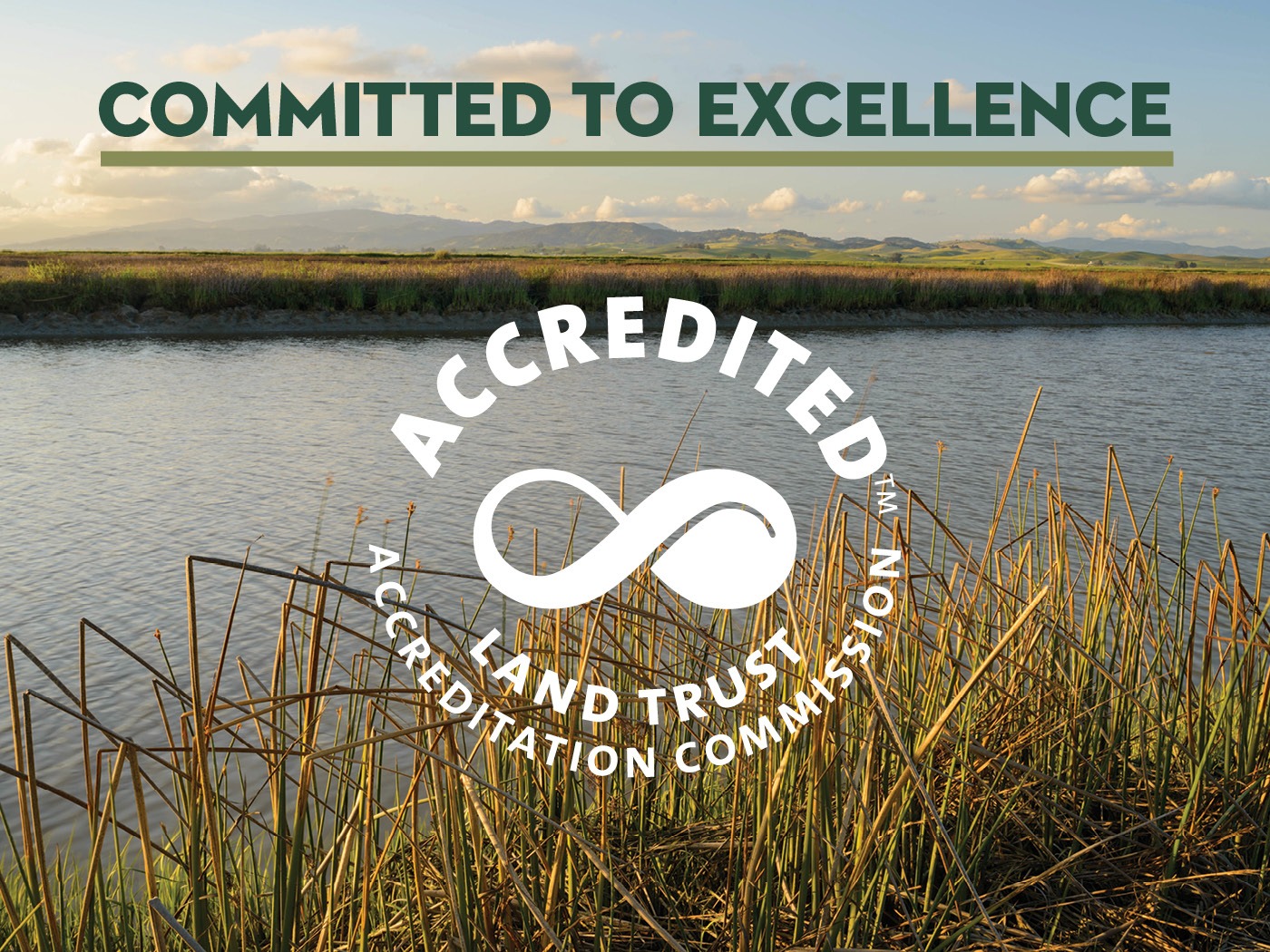
Sonoma Land Trust is steadfast in our commitment to conserving and protecting the open, natural, and working lands and waters of Sonoma County for current and future generations. After extensive review by the Land Trust Accreditation Commission, an independent program of the Land Trust Alliance, our accreditation has once again been renewed. We were also praised for our “extraordinary commitment to excellence, trust, and permanence in land conservation.”
Mirella Ramos named Bay Nature Hero!
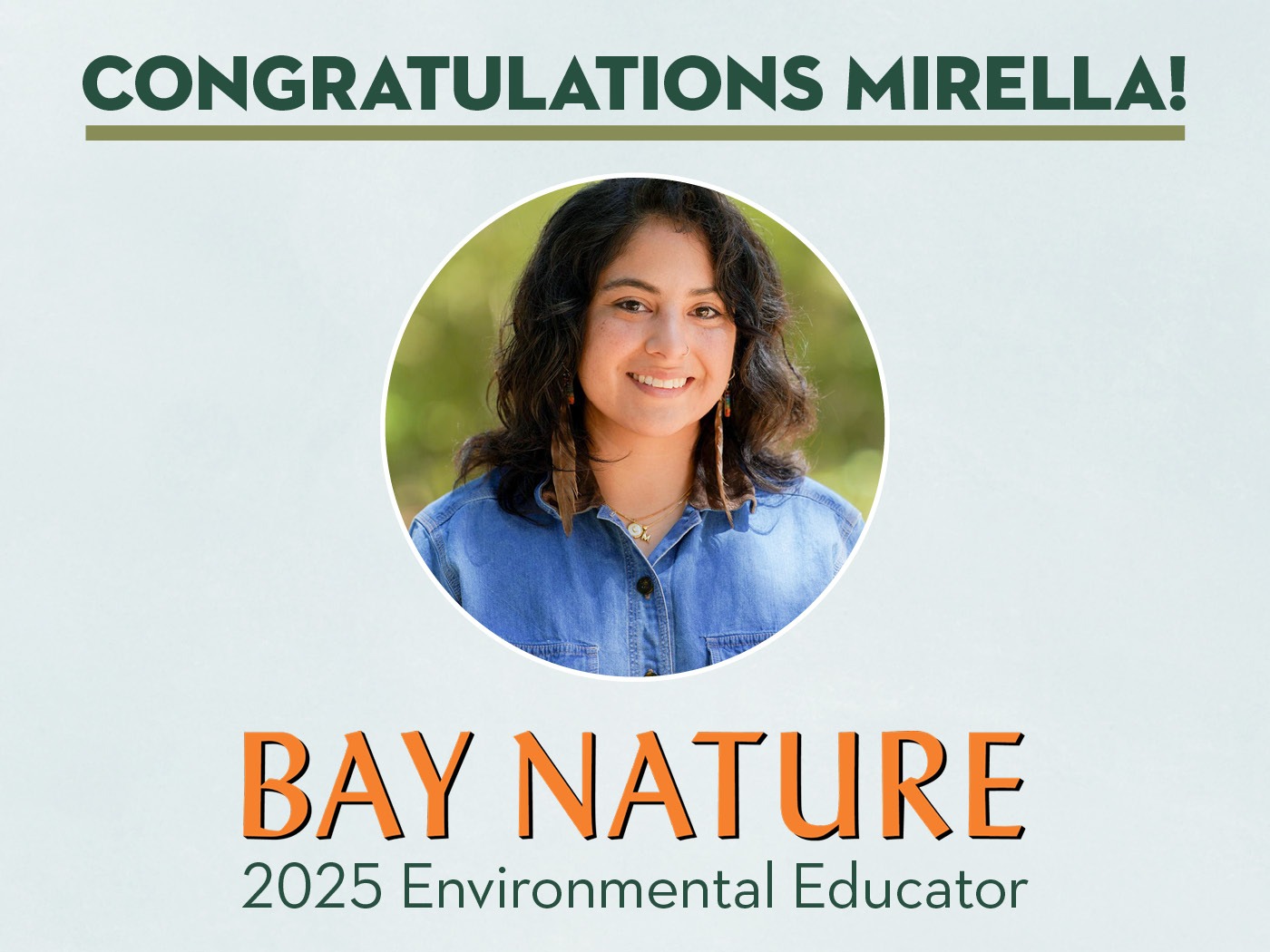
We’re thrilled to celebrate our own Mirella Ramos, honored as an Environmental Educator Hero at Bay Nature’s 2025 Local Hero Celebration this Sunday, April 6. As Sonoma Land Trust’s bilingual youth programs manager, Mirella is a gifted mentor who bridges cultures through conservation and inspires the next generation to protect the natural world.
Community events
Child in the Wild
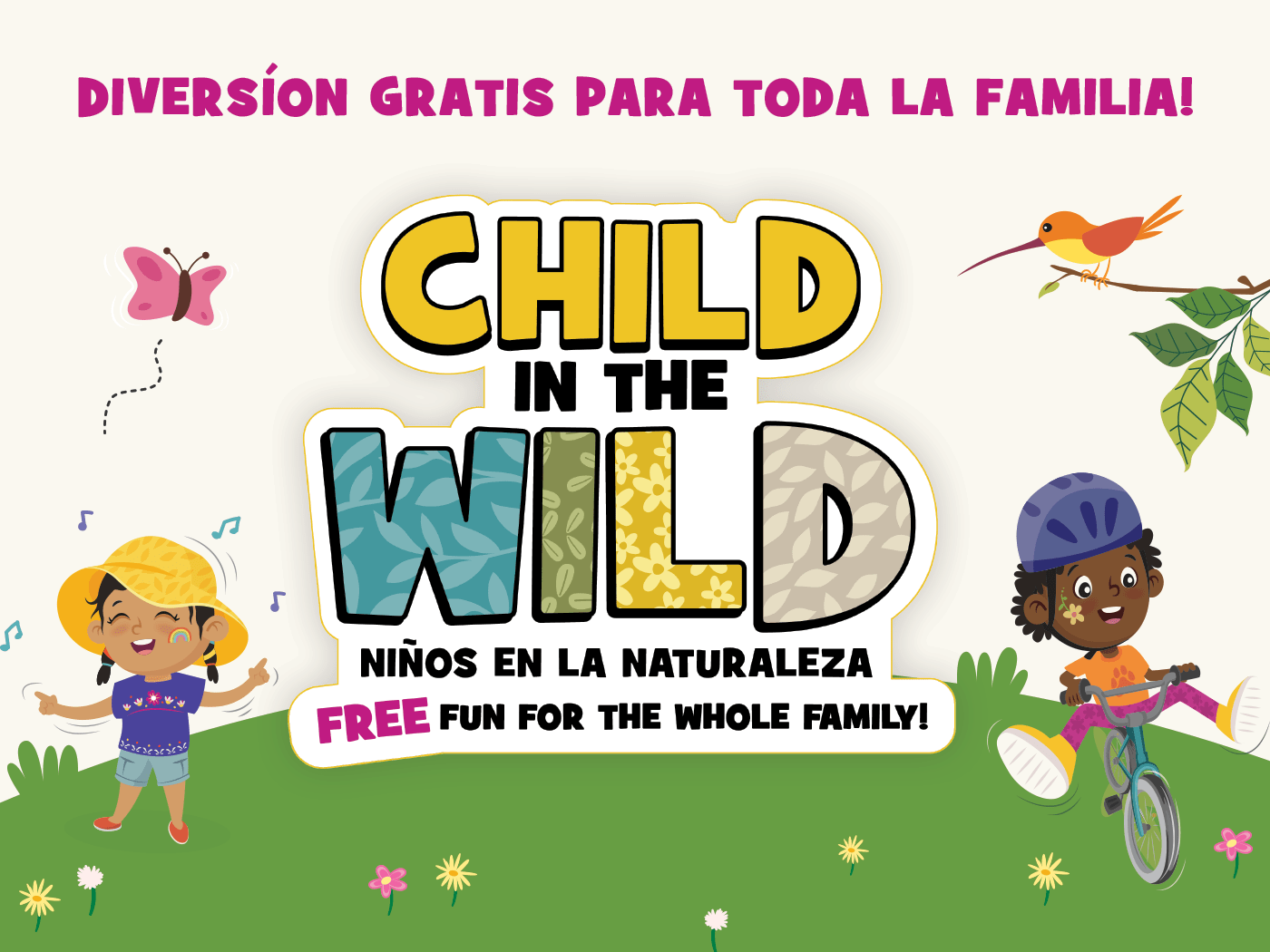
Save the date!
Sunday, June 1, 12–4 pm
We are hosting our fourth annual family-friendly event with live music, crafts, bounce houses, food trucks, vendors, and more! Learn about the Southeast Greenway and share your vision for the new park.
Free Language of the Land Webinars
Kelp Forests

Kelp Forest Photo: © Steve-Lonhart-NOAA-MBNMS-FPWC Circle Inset Photo: © John Hershey and RBHS
Learn from Dr. Rogers-Bennett about what led to the collapse of the Bull Kelp forests in Northern California. She covers biological tipping points and the biology of bull kelp, as well as abalone and sea urchin populations in the region.
Language of the Land: Bringing the Salmon Home

May 21, 7pm
Join Toz Soto, Fisheries Biologist for the Karuk Tribe, to learn about the undamming of the Klamath and how it has affected the salmon and water quality.
Free outings
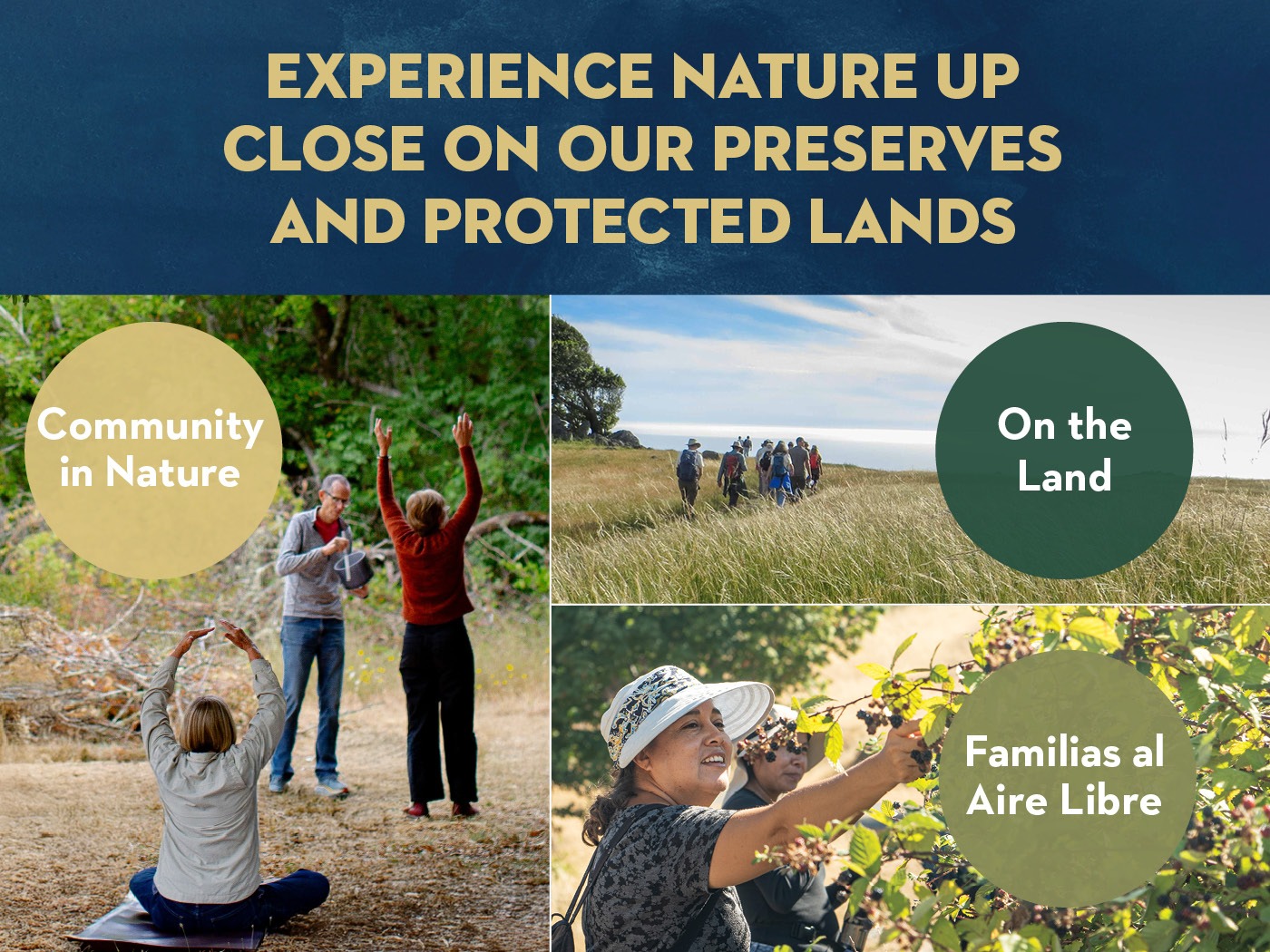
Join us out in nature this month! In addition to our monthly bilingual Familias al Aire Libre/Families Outdoors outing, we’re hosting a series of weekend hikes across the county and weekday wellness programming to connect you with nature.
Many of these hikes are in partnership with Sonoma County Ag + Open Space.
Staff recommendation

Collapse by Jared Diamond tells the powerful stories of past societies that either planned wisely for the future or ignored warning signs and fell apart. It’s a thought-provoking read that reminds us how crucial long-term thinking is if we want to tackle today’s environmental challenges and build a more sustainable future.
